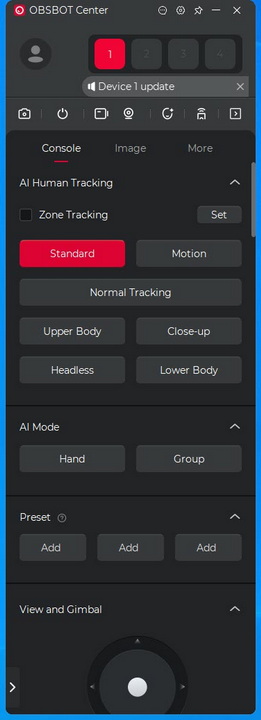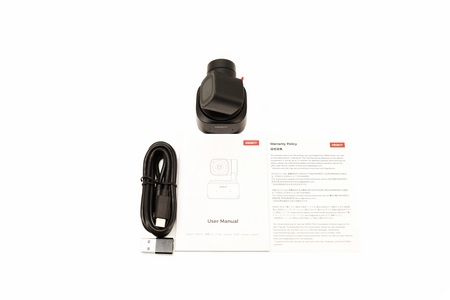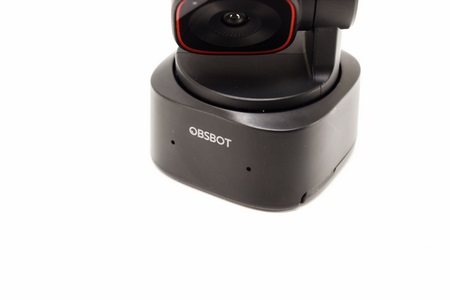INTRODUCTION

One of the most exciting things about PC's back in the 90's was the ability to see and speak to people across the globe by using a web camera. Yes, dial-up connections weren't exactly fast back then so most top-end web cameras had a maximum resolution of 576p (some as low as 240p) which at times also was too much for the available internet bandwidth. Fast forward 25+ years later and web cameras have advanced to a point that end users can broadcast 4k (3840x2160p) content with ease something which became especially popular since 2020 when COVID first hit, and people were forced to work remotely. OBSBOT has since created several award winning and best-selling web camera models and today with me I have their latest one, the Tiny 2 Lite.
Founded in 2016, OBSBOT is an innovative imaging technology and hardware brand dedicated to using new technologies such as AI to inject new vitality into the videography market. With the artificial intelligence as the core, OBSBOT focuses on the application research of new technologies in the field of videography. It hopes to use revolutionary technology and innovative products to innovate the way of public records and image creation, and to change people's social way.
Just as its name suggests the Tiny 2 Lite is basically a cut-down version of the Tiny 2 and even though they are both capable of 4K HDR recording (3840x2160p) and feature similar dual omni-directional microphones with noise reduction and automatic gain and a 2-axis gimbal (±150 degrees pan / ±90 degrees tilt) complete with auto tracking and auto zoom they have many differences. For one the CMOS sensor of the Tiny 2 Lite is not quite as capable (48MP, 1/2", f/1.8 aperture, 79.4" FOV, 4x digital zoom for the Tiny 2 Lite - 50MP, 1/1.5", f/1.9 aperture, 85.5° FOV and 4x digital zoom for the Tiny 2) and only supports recording at 3840x2160p for MJPEG and 640x480p for YUV (MJPEG at 3840x2160p, YUV at 3840x2160p and H264 at 3840x2160p for the Tiny 2). On the other hand, the AI features of the Tiny 2 Lite include auto tracking (motion, close up, standard, upper body, lower body, hand, headless and custom zones) with PDAF (phase detection) auto focus, beauty mode, bokeh mode with auto sleep and gesture controls (it does lack voice commands however) so at least for the most part both models are similar in this regard. So, let's see what the Tiny 2 Lite can do and how it compares not only to the Tiny 2 but also the Tail Air.
SPECIFICATIONS AND FEATURES

PACKAGING AND CONTENTS
As with past models OBSBOT uses a very small white and red bot the front of which is taken by a product picture, 4K logo and the company logo.
At the rear OBSBOT lists the bundle contents, company contact information and numerous certifications.
Once you open the box, you'll see several warning icons and 2D barcodes for the OBSBOT center app.
Along with the Tiny 2 Lite inside the box you'll find a USB-C cable, USB-C to USB-A adapter, warranty card and the user manual.
THE TINY 2 LITE
The Tiny 2 Lite comes with its base attached (unlike the Tiny 2) and so although equally compact it weighs just 91.4g and measures 64.2mm in height, 48.37mm in length and 46.46mm in width.
This time over OBSBOT used an 1/2" CMOS sensor which although not quite on par with that of the Tiny 2 it's also very good.
Typically, the dual omni-directional mics with noise reduction and automatic gain control are located at the lower front of the Tiny 2 Lite (the Tiny 2 Lite also lacks the half-ring activity LED).
Once again, the USB-C port is located at the rear of the Tiny 2 Lite.
The 2-axis Gimbal allows the Tiny 2 Lite to users around (maximum of 300 degrees on the X axis and 180 degrees on the Y axis).
Unlike the Tiny 2 the Tiny 2 Lite comes with its base already attached and so aside the 2 rubber feet located here for desk use there's also a universal 1/4" mounting port.
OBSBOT CENTER

As expected, based on past models, the first thing the OBSBOT center software looked for was the firmware and yes, a new one was available.


Typically, AI tracking, AI mode and manual PTZ use (also zoom) are the main features located in the initial software tab (Console).


From inside the image tab, you can enable/disable HDR and adjust the focus, exposure, anti-flicker, white balance and image settings.



Settings like device initial state (orientation), device sleep, gestures, zoom, direction flip, microphone noise reduction and automatic gain, indicator settings, image flip and reverse view and gimbal are all inside the more tab (firmware upgrades and factory restore as well).

Next is the beauty mode which is not something I've ever used to be honest.




Settings like resolution, recording bitrate and format, hotkeys, connectivity and software updates are all inside the software settings.
SCORE

I haven't really tested and/or used that many web cameras over the years but the ones that I have are still in the lab so it wasn't hard for me to test all of them with numerous Viber and skype calls and make a chart based on my opinion (again, just like with all charts based on my opinion and/or findings you should take this with a grain of salt).
CONCLUSION

The latest Tiny 2 Lite may fall a bit behind in terms of image quality/detail (especially in low-light conditions) when compared to its higher-end brothers (Tiny 2 / Tail Air) but it's still a very good 4k web camera which not many others can compete with currently (that is under sufficient light conditions). Overall image/video and audio quality is very good (I did encounter some slight issues with the noise reduction feature but nothing I haven’t encountered in the past with similarly priced models), the AI features like auto tracking and auto zoom work as advertised and just as well as with past models and as for the 2-axis gimbal it’s certainly a somewhat unique aspect of the OBSBOT cameras that can be extremely useful, especially for streamers and people who either teach remotely or participate in web conferences (always under normal circumstances, don’t always expect it to respond to very sudden/quick movements). The lack of a bundled hard case is something I really liked about the Tiny 2 so I was hoping the Tiny 2 Lite would also have one in the bundle. Also, for some reason it seems some people online think that OBSBOT bundles the remote control for the Tiny 2 and Tiny 2 Lite which clearly isn’t the case. The remote is extra as I did point out in my review of the Tiny 2, so I have no idea as to the way some people thought otherwise.
With less than a week until we leave 2024 behind us the Tiny 2 Lite by OBSBOT retails for USD159 inside the USA (Amazon.com) and for 207.37Euros inside the EU (Amazon.de) a price tag which is especially balanced on the other side of the Atlantic. All said and done the Tiny 2 Lite may not be quite as good as its higher-end brothers, but it does deliver as advertised and that along with its balanced price range are more than enough for the Golden Award.

PROS
- Compact Size
- Image/Video Quality (4K @ 30fps / 1080p @ 60fps / HDR)
- Audio Quality (Dual Noise Cancelling Microphones)
- Center Software
- Bokeh / Beauty Modes (Streaming)
- Price (USA)
CONS
- Slight Noise Reduction Issues
- Lack Of Voice Commands

 O-Sense
O-Sense

















.png)

